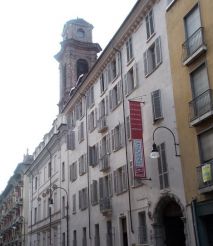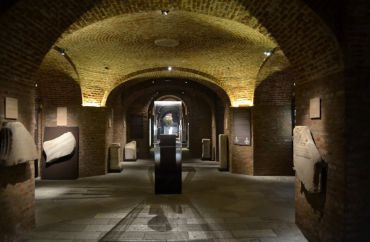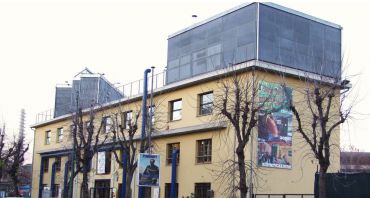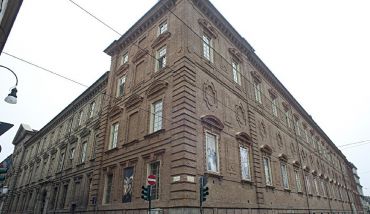Holy Shroud Museum, Turin

Holy Shroud Museum (Museo della Sindone) in Turin is the place where the accumulated knowledge is systematized and new aspects devoted to one thing are studied. Namely – the famous Shroud of Turin, that is still surrounded by many myths and legends, and many scholars have broken spears in the discussions. Here you can get to know the entire history of the Holy Shroud. This place is especially revered by religious people.
History of the museum
The museum was opened on June 14, 1936 with the assistance of the Brotherhood of the Holy Shroud and in the presence of the Archbishop of Turin, Cardinal Maurilio Fossati. Then it was located in two rooms next to the church of the same name. The Brotherhood worked hard to enrich the museum's exposition and increase its functionality. The question arose of expanding the premises, and then, in 1961, the restoration began. In 1963 the museum was again opened for a visit to the house that belonged to the Order, and by 1973 another hall appeared at its disposal. At that time, the International Center for Syndonology began to function on the basis of the museum. In 1997, the architects Richi Ferrero and Marina Gariboldi began the restoration of the old church crypt, turning it into museum premises. Old halls began to be used as multimedia ones. The museum was opened on April 15, 1998, again in the presence of the Archbishop of Turin, Cardinal Giovanni Saldarini.
Facts and myths about the Holy Shroud
The Shroud of Turin is a linen cloth with a length of 4.41 and a width of 1.13 meters. You can see the double embossing of the human body on it, which was subjected to cruel tortures. Wounds on the wrists, legs, and head are distinctly traced. All this gave grounds to assume that this is the funeral shroud of Jesus Christ. Although such shrouds were not widely used among the Jewish people of the time. According to the legend, Jesus himself gave the cloth to Abgar, the king of Ephesus. Already in the 10th century it was sent to Constantinople, from where it was stolen during the plundering of the city by the Crusaders. Later, the shroud was in the hands of the French knight, and then aristocrats. And in 1453 it was bought by the king of Savoy. And already the last king of Italy, Umberto II, bequeathed a relic to the Pope after his death in 1983.
In 1898, the Shroud was first photographed, and the imprint of a human face was found on it. After that, the disputes only increased. It is interesting that the Catholic Church did not officially recognize the canvas as genuine, although it considers it an important proof of the suffering of Christ.
Routes and exposition
The Shroud itself is an important sacred relic, and therefore it is exhibited only rarely in the museum. The last time was from 10 April to 23 May 2010. Now it is stored in the Turin Cathedral under reliable protection. The exposition of the museum is divided into several parts.
- Scientific research. This part presents the works of many scientists who have solved the secrets of the Shroud since 1898. A large zone is devoted to forensic research of material and microparticles on it (dust, blood, aloe, aragonite, myrrh). The pride of this collection is a three-dimensional image of a face imprinted on a canvas. It was developed by Giovanni Tamburelli in 1978.
- Story of the Shroud. Here you can find out about all the milestones of the history of the relic, from the moment of its purchase by the King of Savoy in 1453. In this room there is a wooden box in which the shroud was transported to Turin in 1578. Also an important exhibit is the silver casket, where the relic was kept until April 11, 1997, when a fire occurred in the chapel of the Turin Cathedral.
- Photo. There is a number of official photos of the Shroud here. Among them, the first photo by Secondo Pia in 1898, and a photograph by Giuseppe Enrie in 1931, and high-definition photographs taken in recent decades. Also in the collection there is the first color snapshot by Giovanni Judica Cordiglia in 1968.
In the halls of the museum there are many other objects, one way or another connected to the Shroud. Excursions are conducted only in Italian, but foreign tourists are given free audio guides in 4 other European languages. The museum has developed a route for people with visual problems.
How to get there
The museum is located in the historic center of the city, on Via San Domenico, 28. The Turin Cathedral is just in a 10-minute walk away, near the Royal Palace and the Chiablese Palace. You can get there by buses № 52, 67, STAR2. Stop San Domenico or Museo Sindone.
Opening hours: from 9:00 to 12:30, and from 15:00 to 19:00. The ticket office closes at 18:00. For groups over 20 people, an advance booking is required. Phone number (+39) 011 4365832.
Admission: the cost of a full ticket is 6 euros,with a discount (pensioners, students and groups of more than 20 people) – 5 euros, for children 6-12 – 3 euros. For children under 6 – admission is free. Data of April 2018.





